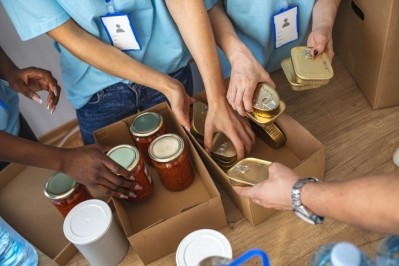Upcoming expiration for P-EBT food assistance for school children threatens long-term ramifications

“The pandemic has devastated the economy and people across the country are struggling to get by. If Congress and the Administration fail to agree to and pass the strong relief package before they leave town for the election, they will leave millions of families to face this crisis on their own,” warns Stacy Dean, vice president for food assistance policy at the Center for Budget and Policy Priorities.
In particular, she said during a conference call Sept. 17 coordinated by CBPP, she worries about the millions of children whose families rely on free and reduced price school meals, but whose academic years have begun online or as a hybrid of online and in-person and who therefore will not be able to receive meals in person.
For the sake of these children and their families, Dean and others are calling on Congress to extend emergency legislation passed after the pandemic was announced that allowed some qualifying families to buy groceries with pandemic electronic benefit transfer (P-EBT) funds to replace the free or reduced priced breakfasts and lunches that their children missed while schools were closed due to the coronavirus.
“Although it was optional, brand new and a significant undertaking, every state implemented Pandemic EBT, providing families with school age children benefits ranging from about $250 to $450 per children to replace the meals missed during the spring,” she said.
“And it paid off,” she said, noting that research by the Brookings Institute found that P-EBT reduced food hardship faced by the lowest income children by 30% in the week following its disbursement. Still, she added, food hardship among these children and family remained high, even after the P-EBT benefits were issued.
Now, those benefits may come to an end in less than two weeks unless Congress acts before the end of the month, Dean warns. Even if Congress does extend the benefits, the longer it waits the harder it will be for states to disburse the funds in time for early October.
Failure to expand P-EBT and provide flexible food assistance while school districts chart different teaching paths could have long-term repercussions for children, Megan Sandel, co-director of the Grow Clinic for Children at Boston Medical Center and the co-lead principle investigator of Children’s HealthWatch, added during the conference call.
“What I see every single day from the pandemic is really just amazingly increased numbers of severely underweight children coming to our clinic and parents panicked about how they’re going to find enough food,” she said, noting that many of the children who come to the Grow Clinic meet the malnutrition guidelines set by the World Health Organization.
To put that in context, she explained, the short-term and long-term development of children who do not have sufficient nutrition can lead to critical brain development delays, resulting in a generation of children who will not be able to meet academic standards.
“We have published a Children’s Health Watch that showed in the last recession, when they increased SNAP benefits, families were healthier and the kids had better health outcomes, and they were less likely to be hospitalized and their parents were in better health,” she said, adding, “So, it is really critical that the Pandemic-EBT is expanded so kids stay on track. … There’s really no excuse for inaction.”
A renewed call for increased SNAP benefits
In addition to expanding the P-EBT program, the CBPP and other stakeholders are echoing their previous call for Congress to temporarily increase the maximum benefit by 15% of the SNAP so that all participants can benefit from extra funds.
This is not the first time the group has argued for SNAP to increase 15%, but so far its efforts have not resulted in a change.
“While Congress did provide added food assistance this spring through SNAP, the poorest households were left out, many with children,” she said, explaining that beneficiaries who already received the maximum funds did not qualify for more. As such, she said, “these emergency allotments failed to reach some 32% of participants for 40% of households, including at least 5 million children.”
She argued that if Congress temporarily increased the maximum benefit by 15% it could provide additional support for all SNAP households.
















